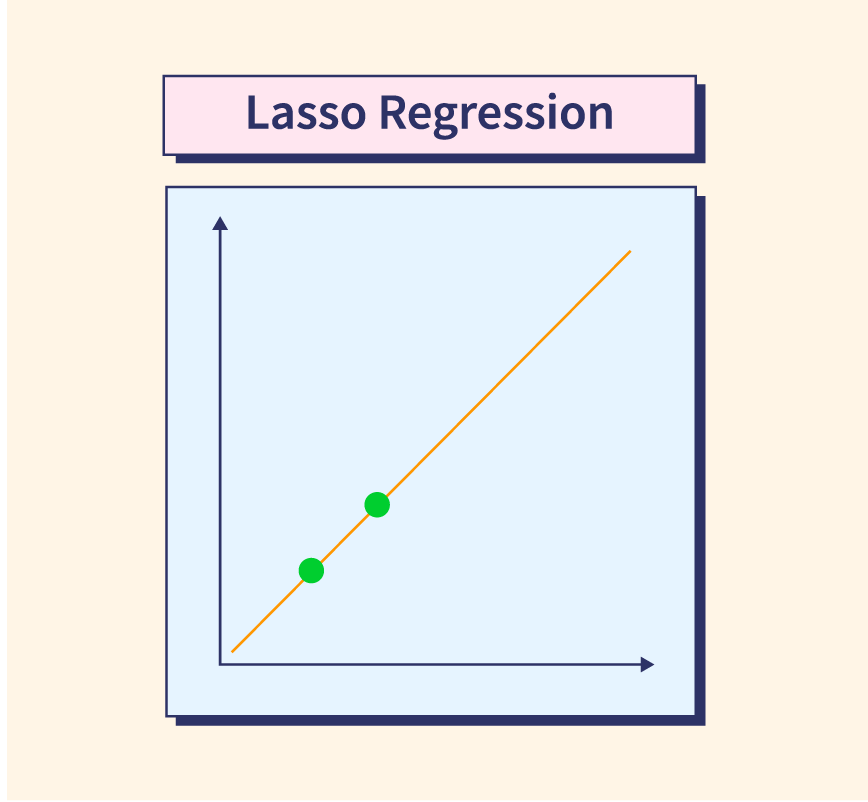Did you know that artificial intelligence (AI) systems rely on sophisticated techniques to represent and reason with knowledge? Without proper knowledge representation, AI would be unable to understand, process, or use the information it receives. Knowledge representation forms the foundation of intelligent behavior, enabling AI systems to simulate human-like reasoning.
This article explores the concept of knowledge representation in AI, delving into its types, techniques, and the key requirements for building effective AI systems. Whether you’re new to AI or looking to deepen your understanding of how machines “think,” this guide will shed light on how knowledge is structured and utilized in AI applications.
What is Knowledge Representation?
Knowledge representation in AI refers to the methods used to encode information about the world into a format that an AI system can understand and use to make decisions. It is a crucial component of AI that bridges the gap between raw data and meaningful reasoning. By representing knowledge in a structured way, AI systems can interpret data, draw inferences, and apply reasoning techniques to solve problems.
In simple terms, knowledge representation provides AI with the “knowledge” it needs to act intelligently in various applications. This can include facts, rules, objects, and relationships between entities.
What to Represent
In AI, what to represent refers to the types of knowledge that an AI system must understand and manipulate to perform tasks effectively. The types of knowledge represented can vary depending on the application and the problem the AI is trying to solve. Below are key types of knowledge that are typically represented in AI systems:
1. Objects and Entities
- AI systems often need to represent physical or abstract objects (e.g., cars, people, concepts) and their properties (e.g., color, size, name). For instance, a self-driving car needs to understand the entities on the road such as vehicles, pedestrians, and traffic signs.
2. Events and Actions
- Events (what happens) and actions (what the AI can do) are essential in dynamic environments. For example, in a game AI, knowledge about player moves and game events is crucial for making strategic decisions.
3. Relationships and Hierarchies
- AI often needs to represent relationships between objects, such as “is a part of” or “is related to.” Hierarchical relationships are especially useful in complex systems where different levels of abstraction are involved (e.g., a dog is a type of animal).
4. Facts and Rules
- Facts represent specific pieces of information, while rules define the logic that governs how facts are used. For example, an expert system might use the rule “If a patient has a fever and a sore throat, they may have the flu” to make a diagnosis.
5. Uncertainty
- Real-world knowledge often involves uncertainty. AI systems need to represent and reason with uncertain knowledge, such as predicting stock prices or diagnosing medical conditions based on incomplete or noisy data.
Different Types of Knowledge
In AI, knowledge is categorized into different types based on how it is used and represented. Understanding these types helps in structuring information effectively for reasoning and decision-making. Here are the primary types of knowledge in AI:
1. Declarative Knowledge
- What it is: This type of knowledge refers to facts or statements that describe the world, often in the form of “knowing what.” It is static and doesn’t involve actions or procedures.
- Example: “Paris is the capital of France” is a piece of declarative knowledge.
2. Procedural Knowledge
- What it is: Procedural knowledge describes “how” to perform tasks or solve problems. It is dynamic and action-oriented, focusing on processes and methods.
- Example: Knowing how to solve a mathematical equation or how to bake a cake are examples of procedural knowledge.
3. Structural Knowledge
- What it is: This type of knowledge deals with the relationships between entities or concepts, organizing knowledge into structures like hierarchies or networks.
- Example: Understanding that a dog is a type of animal and a poodle is a type of dog reflects structural knowledge.
4. Meta Knowledge
- What it is: Meta knowledge is knowledge about knowledge. It refers to understanding which knowledge to use in a particular situation or context.
- Example: In a medical diagnostic system, knowing which symptoms to prioritize when diagnosing a disease is an example of meta knowledge.
5. Heuristic Knowledge
- What it is: Heuristic knowledge consists of experience-based rules of thumb or best practices that help in making decisions quickly without complete information.
- Example: A heuristic might be “If a website loads slowly, refresh the page” — it’s not always guaranteed to work, but it’s often useful.
Each of these types of knowledge serves a different purpose in AI systems and helps build more robust and capable AI applications.
Cycle of Knowledge Representation in AI
The cycle of knowledge representation in AI refers to the iterative process through which AI systems perceive, learn, represent, and apply knowledge to make informed decisions. This cycle is essential for building intelligent systems capable of reasoning and interacting with their environment. Here are the key stages of this cycle:
1. Perception
- Description: The process begins with AI systems perceiving data from their environment. This data could come from sensors, cameras, user inputs, or databases.
- Example: A self-driving car uses sensors to perceive its surroundings, such as detecting pedestrians and other vehicles.
2. Learning
- Description: After perceiving data, the system learns by identifying patterns, relationships, and trends from the data. This can involve supervised learning, unsupervised learning, or reinforcement learning techniques.
- Example: An AI algorithm can learn from historical sales data to predict future trends, helping businesses make data-driven decisions.
3. Knowledge Representation & Reasoning
- Description: In this stage, the system organizes the learned data into structured knowledge, allowing it to reason and draw conclusions. This is where the AI uses knowledge representation techniques to encode the information it has learned.
- Example: A medical diagnosis system represents symptoms, diseases, and treatments as structured knowledge and uses reasoning to suggest the best treatment based on a patient’s symptoms.
4. Planning
- Description: The system uses the represented knowledge to plan actions based on goals and constraints. Planning involves selecting the best course of action based on the available knowledge.
- Example: In robotics, AI systems use planning to determine the most efficient path for a robot to navigate through a room while avoiding obstacles.
5. Execution
- Description: Finally, the system executes the planned actions, completing the cycle. After execution, the AI system can receive feedback and adjust its knowledge and actions accordingly.
- Example: A robot executing the planned actions to pick up and move objects based on the knowledge it has about the environment.
This cycle is continuous and adaptive, with each stage influencing the next. AI systems become more intelligent and effective as they go through these stages, constantly refining their knowledge and decision-making capabilities.
The Relation Between Knowledge and Intelligence
Knowledge and intelligence are deeply interconnected in both artificial and human cognition. In AI, intelligence refers to the system’s ability to make informed decisions, solve problems, and adapt to new information. Knowledge representation provides the foundation for this intelligence by enabling the AI system to store, organize, and use information effectively.
1. Knowledge as the Building Block of Intelligence
- Just as humans rely on knowledge to make decisions, AI systems require knowledge to exhibit intelligent behavior. Without the ability to represent knowledge, AI systems would be limited to simple, reactive behaviors. Knowledge allows AI to analyze situations, reason about the best course of action, and adapt to new environments.
2. Cognitive Science and AI
- Cognitive science studies how humans represent knowledge and use it to solve problems. AI systems often draw inspiration from cognitive science, simulating human reasoning processes through knowledge representation techniques such as semantic networks, frames, and production rules. This alignment between cognitive science and AI enhances our ability to build intelligent systems that mimic human thought processes.
3. Reasoning and Decision-Making
- The ability to reason—drawing conclusions from known facts and rules—is a hallmark of intelligence in both humans and AI. AI systems that possess knowledge can perform logical reasoning, make inferences, and predict outcomes. This capability is critical for applications like medical diagnosis, autonomous driving, and financial forecasting.
Techniques of Knowledge Representation in AI
There are several techniques used to represent knowledge in AI systems, each with its own strengths and use cases. These techniques help AI systems organize and reason with the knowledge they acquire. Below are some of the key methods of knowledge representation:
1. Logical Representation
- Description: Logical representation uses formal logic to encode knowledge, allowing AI to reason by applying rules and deriving conclusions.
- Example: In an expert system for medical diagnosis, logical statements like “If a patient has a fever and a cough, then they might have the flu” can be represented as rules using propositional logic or predicate logic.
- Strengths: Logical representations are precise and allow for powerful inference mechanisms.
- Weaknesses: They can be rigid and may not handle uncertainty or incomplete information well.
2. Semantic Network Representation
- Description: A semantic network is a graphical representation of knowledge where concepts are represented as nodes and relationships between concepts as edges.
- Example: A semantic network for animals might include nodes representing “dog,” “mammal,” and “animal,” with edges showing hierarchical relationships (e.g., “A dog is a mammal”).
- Strengths: Provides an intuitive way to represent relationships and hierarchies, useful in natural language processing and reasoning tasks.
- Weaknesses: Can become complex and difficult to manage as the network grows.
3. Frame Representation
- Description: Frames represent knowledge in structured “frames” or templates, each containing information about an object or situation. Each frame holds slots that store attributes or related information.
- Example: A frame for a car might include slots for attributes such as “make,” “model,” “color,” and “owner.” This structure allows for easy organization of knowledge about similar objects.
- Strengths: Frames are effective for representing structured, hierarchical knowledge and allow easy modification or extension of attributes.
- Weaknesses: Limited flexibility when dealing with highly dynamic or unpredictable information.
4. Production Rules
- Description: Production rules consist of “if-then” statements that define actions based on conditions. This method is often used in rule-based systems and expert systems.
- Example: “If the temperature is above 30°C, then turn on the air conditioning” is a simple production rule that can guide the behavior of a thermostat system.
- Strengths: Simple and intuitive, production rules are effective in systems that need to apply a set of predefined rules for decision-making.
- Weaknesses: Can lead to rule conflicts and may become unmanageable in large systems with numerous rules.
Each of these knowledge representation techniques has its own use cases, and they can be combined in AI systems depending on the problem at hand. Logical representations are great for formal reasoning, while semantic networks and frames excel at representing relationships and structured information.
Approaches to Knowledge Representation
AI systems use different approaches to represent knowledge depending on the nature of the problem and the type of information they need to handle. Here are some key approaches to knowledge representation in AI:
1. Simple Relational Knowledge
- Description: This approach represents knowledge as simple facts in the form of relations between entities. It uses tables or relational databases to store information about objects and their relationships.
- Example: A table in a database could store the relationship between students and their courses, with columns for student names, course names, and grades.
- Strengths: Straightforward and easy to implement, especially in structured environments like databases.
- Weaknesses: Lacks the ability to handle complex relationships or hierarchies.
2. Inheritable Knowledge
- Description: Inheritable knowledge uses hierarchies and inheritance to represent general and specific information about objects. This approach allows entities to inherit properties from higher-level categories.
- Example: In a knowledge base, a “dog” might inherit properties from the more general category “mammal,” such as being warm-blooded and having fur.
- Strengths: Efficient in representing hierarchical knowledge and reducing redundancy by reusing information.
- Weaknesses: Can be challenging to represent exceptions or unique cases that don’t follow the inheritance structure.
3. Procedural Knowledge
- Description: Procedural knowledge defines sequences of actions or steps needed to accomplish specific tasks. It focuses on “how to” knowledge rather than “what is.”
- Example: An AI system for controlling a robot might use procedural knowledge to define the steps required for the robot to pick up an object: locate the object, move towards it, and grip it with an arm.
- Strengths: Useful for automating tasks and guiding AI systems through well-defined procedures.
- Weaknesses: Not suitable for tasks requiring complex reasoning or flexible decision-making.
4. Inferential Knowledge
- Description: This approach involves representing knowledge in a way that allows the AI to infer new information from existing facts and rules. Logical reasoning is applied to draw conclusions.
- Example: Given the facts “All humans are mortal” and “Socrates is a human,” an AI system using inferential knowledge can infer that “Socrates is mortal.”
- Strengths: Enables AI systems to apply logical reasoning and make deductions.
- Weaknesses: Can be computationally expensive and may struggle with incomplete or uncertain information.
Each of these approaches offers unique benefits and limitations, and they are often used in combination within AI systems to meet the needs of specific tasks or domains.
Requirements for Knowledge Representation System
For a knowledge representation system to be effective in AI, it must meet several key requirements. These requirements ensure that the system is capable of handling complex information while maintaining accuracy, flexibility, and efficiency. Below are the essential requirements for a robust knowledge representation system:
1. Representational Adequacy
- Description: The system must be able to represent all relevant knowledge about the domain effectively. This includes facts, relationships, and rules that are necessary for reasoning and decision-making.
- Example: In a medical diagnosis AI, the system must represent knowledge about symptoms, diseases, and treatments in a way that allows for accurate diagnosis.
- Challenge: Ensuring that the system can accommodate the vast and diverse knowledge of a domain without becoming too complex.
2. Inferential Adequacy
- Description: The system should be able to generate new knowledge by applying inference mechanisms, such as deduction, induction, or abduction, to the represented knowledge.
- Example: An AI system might use inferential reasoning to deduce that a person with a high fever and sore throat likely has the flu based on existing rules and facts.
- Challenge: Developing efficient algorithms that can handle large datasets while providing fast and accurate inferences.
3. Inferential Efficiency
- Description: The system must be capable of making inferences quickly and efficiently. It should use resources such as memory and processing power in an optimal manner.
- Example: A financial AI needs to infer stock market trends in real time to make investment decisions, requiring both speed and accuracy in its inferences.
- Challenge: Balancing the complexity of inferences with the need for rapid decision-making, especially in time-sensitive applications.
4. Acquisitional Efficiency
- Description: The system must be able to easily acquire and integrate new knowledge as it becomes available. This includes updating existing knowledge structures and incorporating new data without disrupting the system.
- Example: An AI system designed for customer service should be able to incorporate new FAQs and policies dynamically as the business evolves.
- Challenge: Ensuring that the system remains scalable and adaptive as new knowledge is continuously added over time.
5. Consistency
- Description: The knowledge representation system must maintain consistency across all facts, rules, and relationships. Inconsistent or contradictory information can lead to incorrect reasoning and unreliable results.
- Example: In an AI system for legal reasoning, if the system contains contradictory laws or regulations, it may struggle to provide accurate legal advice.
- Challenge: Ensuring that as the knowledge base grows, mechanisms are in place to detect and resolve inconsistencies.
These requirements are critical to developing AI systems that are not only capable of representing knowledge but can also reason with it effectively and adapt to new information. Ensuring that a knowledge representation system meets these standards is essential for building intelligent and reliable AI solutions.
Conclusion
In AI, knowledge representation is a foundational component that allows systems to simulate human reasoning, make decisions, and solve complex problems. From representing facts, rules, and relationships to applying logical inference and reasoning, knowledge representation provides the structure that enables intelligent behavior. By understanding the different techniques, such as logical representation, semantic networks, and production rules, and ensuring systems meet key requirements like representational adequacy and inferential efficiency, AI systems can be more effective, adaptive, and intelligent.
As AI continues to evolve, the importance of robust knowledge representation will only grow, enabling AI to handle increasingly complex tasks across diverse fields, from healthcare to finance to robotics


